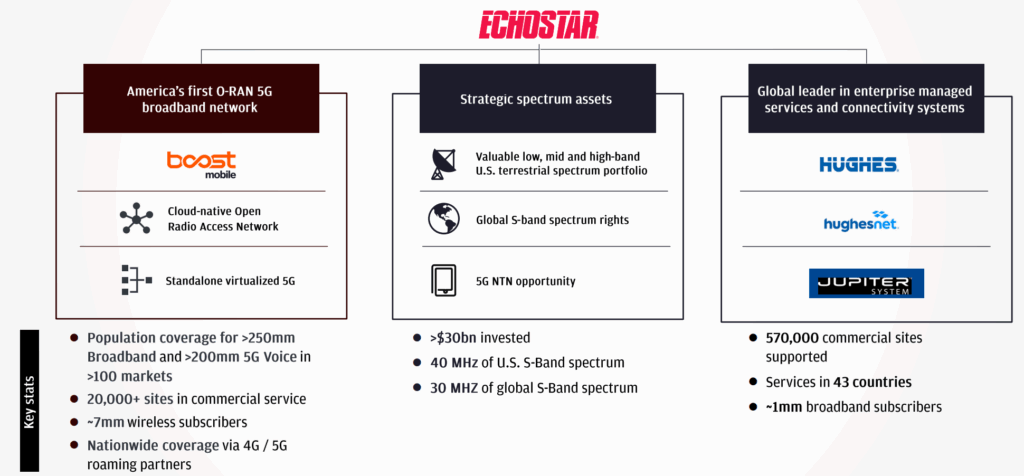SpaceX Expands Starlink Reach with $2.6B Spectrum Deal and Apple Watch Integration
SpaceX is stretching the limits of satellite connectivity. The space teleco announced a new $2.6 billion spectrum acquisition and quietly extended Starlink’s reach to Apple Watches in Canada and Japan. The company, led by Elon Musk, is placing its cellular Starlink system to rival traditional carriers. They are building a global infrastructure for direct-to-device communication.
The twin developments — one financial, one technological — illustrate how SpaceX plans to dominate both low orbit and the consumer markets on the ground.
What’s Happening & Why This Matters
SpaceX Buys More Spectrum — $2.6 Billion Worth
After announcing a $17 billion spectrum deal with EchoStar just months ago, SpaceX doubled down. They acquired another slice of radio spectrum from the company. The latest purchase covers the 1695–1710MHz AWS-3 band, essential for data uploads in the U.S. The cost: approximately $2.6 billion in SpaceX stock.
The purchase surprised analysts, especially since Verizon was in talks to secure the same frequencies for 5G expansion. Instead, SpaceX stepped in — consolidating valuable wireless real estate for its Starlink Direct-to-Cell service.

EchoStar confirmed that SpaceX intends to use the AWS-3 license. Alongside the previously acquired 2000–2200MHz bands, it will bolster cellular Starlink’s coverage and capacity. The added spectrum allows higher data throughput, enabling 4G LTE-like speeds for smartphones and wearables.
“In SpaceX’s hands, it gives them flexibility for combining uplink and downlink,” said EchoStar chairman Charlie Ergen.
Unlike previous radio bands, the new AWS-3 spectrum already works with some existing smartphones. This includes the latest iPhone models via the n70 band. Compatibility accelerates rollout potential, which minimizes the typical two-year delay for hardware integration.
Starlink Now Connects Apple Watches in Canada and Japan
While SpaceX expands its airwave arsenal, it’s also quietly broadening device support. In Japan and Canada, Apple Watch users can now access Starlink satellite connectivity through local telecom partners.

Japanese carrier KDDI’s Au network confirmed that Starlink Direct now beams data directly to the Apple Watch Ultra 3, Series 11, and SE 3. Users can send and receive text messages through the Apple Watch’s native Messages app. This bridges connectivity gaps in rural or offshore regions.
In Canada, Rogers Communications has launched a free beta program that extends the same functionality to its customers.
The development implies that T-Mobile — SpaceX’s U.S. partner for Starlink Direct — may soon enable the same capability domestically. For now, the service is exclusive to select markets as SpaceX improves performance and meets regulatory compliance.
Global Ambitions and Apple Speculation
The timing of Starlink’s expansion coincides with Globalstar — Apple’s existing satellite partner — exploring a potential sale to SpaceX. Industry observers speculate that if SpaceX acquires Globalstar, Apple’s satellite services will eventually migrate to Starlink’s infrastructure.
An acquisition unifies iPhone, Apple Watch, and iPad connectivity under a single ecosystem. Unification make it capable of providing messaging, navigation, and video transmission through orbiting satellites.
“This capability makes satellite connectivity accessible for mainstream devices,” said analyst Mike Dano, noting that SpaceX’s goal is to make satellite data feel as seamless as cellular coverage.
SpaceX’s long-term strategy creates a truly global communications mesh. The ‘mesh’ serves everything from phones and wearables to vehicles and IoT systems. Each new spectrum acquisition and device partnership brings that vision closer to reality.
TF Summary: What’s Next
SpaceX’s $2.6 billion spectrum deal and Apple Watch integration embodies a dual-front strategy. They address technical infrastructure and deepening consumer adoption. The company’s Starlink Direct service is not limited to a rural connectivity solution. It’s morphing into a satellite-powered network for the everyday user.
MY FORECAST: Expect SpaceX accessibility to more consumer devices in Starlink’s ecosystem. They will push regulatory bodies to authorize global coverage. If Globalstar joins in, the next generation of Apple hardware may depend on Starlink’s satellites. That’s a move beyond emergencies, but for daily communication.
— Text-to-Speech (TTS) provided by gspeech


